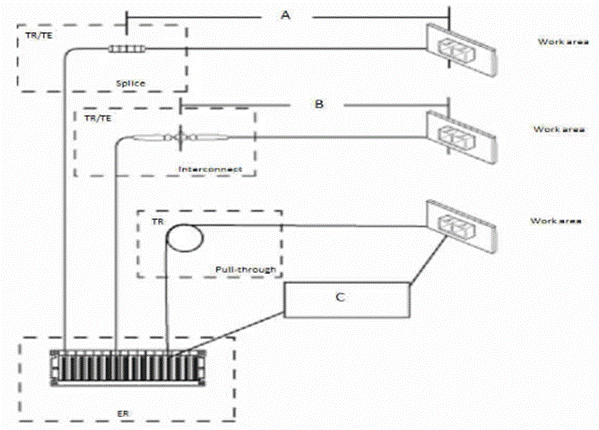BICSI RCDDv14 BICSI Registered Communications Distribution Designer – RCDDv14 Online Training
BICSI RCDDv14 Online Training
The questions for RCDDv14 were last updated at Apr 21,2025.
- Exam Code: RCDDv14
- Exam Name: BICSI Registered Communications Distribution Designer – RCDDv14
- Certification Provider: BICSI
- Latest update: Apr 21,2025
What is used to facilitate MINOR changes to the Project Requirements?
Request lot Information (RFI)
- A . Punch list
- B . Field order
- C . Change order
- D . Change order request
Which two of the following types of metallic conduit REQUIRE threaded couplings? (Select two options.)
- A . Electrical metallic tubing (EMT)
- B . Aluminum metal conduit (AMC)
- C . Flexible metal conduit (FMC)
- D . Intermediate metal conduit (IMC)
- E . Rigid metal conduit (RMC)
When considering pathway types, the ICT distribution designer should consider the applicable MICE factors as defined in TIA 568 for structured cabling systems and components MICE 3 relates to
- A . commercial environment
- B . heavy industrial environment
- C . medical environment
- D . light industrial environment
An ICT distribution designer is representing a client during a project execution.
What is the designer’s role in the Vendor and Contractor Coordination?
- A . Oversee the sequence of the work and ensure that the job proceeds as anticipated in accordance with the project execution schedule
- B . Synchronizes the daily activities of all trades through daily or weekly meetings (depending on project size, complexity, or criticality) with individual trade PMs. Fore people, supervisors and designers as necessary
- C . Holds two critical meetings to begin the project and allow all parties to introduce themselves
The first meeting usually is conducted with the owner and design team, and the second meeting is with the field personnel and subcontractors - D . lf specific questions arise regarding coordination of the installation with structural, architectural, and site conditions and work between trades, submit RFIs to the GC with appropriate documentation to demonstrate the concern along with the proposed installation.
An ICT distribution designer is designing a backbone cabling network that is specified for a campus network including several links approaching 2000 m (6562 It) and data rates of 100 Gb/s What optical fiber type(s) should be used?
- A . OM3 fiber
- B . OM4 fiber
- C . Both OS1 and OS2 fiber
- D . Both OS2 and OM3 fiber
What is the MAXIMUM recommended length for A in the image below?

- A . 70 m (230 ft)
- B . 90 m (295 ft)
- C . 100 m (320 ft)
- D . 150 m (495 ft)
- E . 300 m (985 ft)
Before working on equipment, what is the FINAL step in the lockout/tagout (LOTO) procedure?
- A . Verify the equipment controls are in the proper operating position.
- B . Train workers to perform the LOTO process.
- C . Apply appropriate tags both locally and remotely.
- D . Confirm the device is de-energized by proving it will not run when started.
- E . Confirm all unnecessary items have been removed from the area.
The type of apparatus housed in TRs varies greatly in size, purpose and function.
Which two of the following active equipment is included? (Select two options.)
- A . Cross-connect facilities
- B . Telecommunication’s equipment
- C . Environmental controls
- D . Lighting controls
- E . Building system equipment
A design build firm has been retained by a client to construct an outpatient clinic. The client has hired an ICT distribution designer to review the DB firm’s work product ensuring that the certified (mat documents are complete. In what capacity would the designer MOST LIKELY be serving?
- A . Quality Assurance (QA)
- B . ICT Designer of Record (DOR)
- C . Project Management (PM)
- D . Quality Control (QC)
In specifying labels and pruned tags that meet Underwriters Laboratories (UL) 969 Standard, marking and labeling systems are provided following the listed metrics.
Which two of the following are REQUIRED for the UL standard? (Select two options.)
- A . Adhesion test
- B . Thickness test
- C . Texture test
- D . Durability test
- E . Visual inspection
Latest RCDDv14 Dumps Valid Version with 288 Q&As
Latest And Valid Q&A | Instant Download | Once Fail, Full Refund

